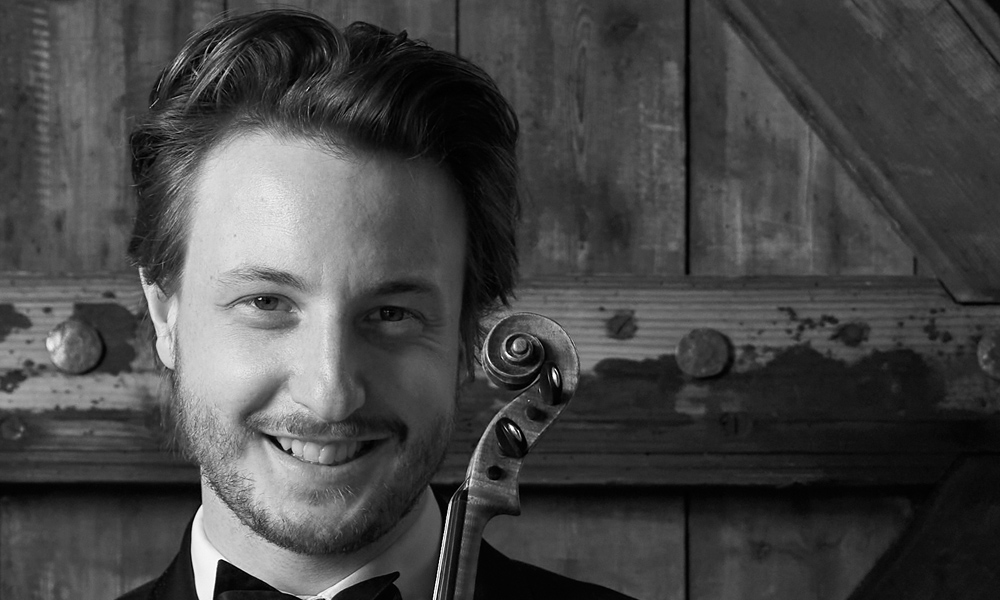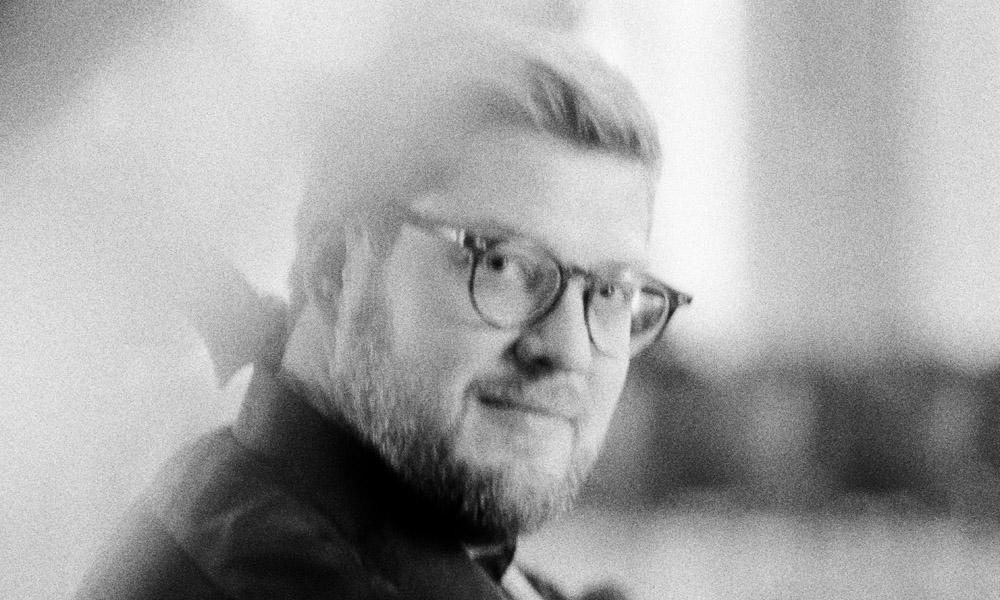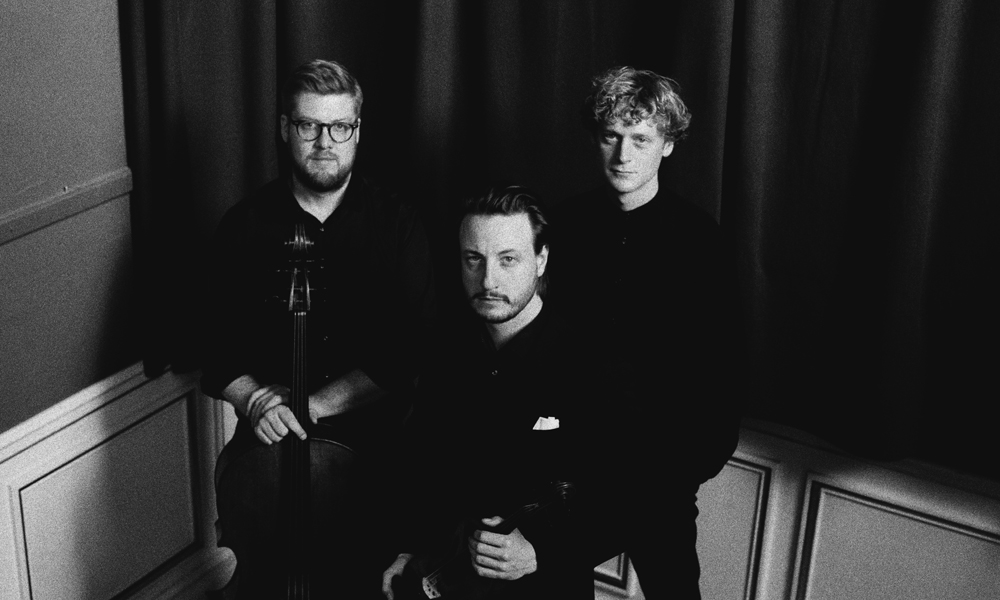Projekt
We asked the artistic director of Kammerballetten, the composer and pianist Alexander McKenzie, by e-mail where the idea of combining music and ballet came from, what it is like for musicians to be on stage with dancers and how the pieces are created.




What was your first experience with dance? What did it trigger in you? / How did you come up with the idea of combining chamber music and ballet?
I grew up in Sydney, where my dad runs a ballet school which sends students to some of the big companies in the world, Royal Ballet, etc. So growing up, I was exposed to many performances, and seeing as my dad is a pianist too, almost every evening I would fall asleep to the sound of famous pas de deux’s and solos which he was practising and transcribing on his piano. I moved to Denmark after school, to study at the Royal Danish Academy of Music. For many years my sole focus was preparing solo piano and chamber music for concerts and competitions. Then in 2015 I began performing with dancers from Staatsballett Berlin and The Royal Danish Ballet at the annual summer festival Verdensballetten (The World Ballet) (which, incidentally every year performs on Sylt as well!). The following year I began to work with the danish dancer and choreographer Tobias Praetorius, who created a piece we performed in Copenhagen.
In 2018 the trio received a substantial artistic grant from the Augustinus Foundation - on the grounds that we did something to inject danish cultural life with new art, or a new way of perceiving and experiencing classical chamber music. The following year Kammerballetten was awarded the biggest danish theatre award for the category “production of the year”.
I distinctly remember performing Tobias Praetorius’ “Bach Solo-Duet” in 2018, and having an immediate feeling that this was for me the most exciting and artistically exhilarating performance moment I had ever had. Something about the nerve, intimacy and intensity of these two art forms together. Dance and music touch upon the essence of what it is to be human.
The spectrum of dance styles in Kammerballetten is very broad: from ballet by a choreographer like Tobias Praetorius to modern dance by Ella Rothschild. And the dance is very abstract when it takes music as its starting point, as in Oenothera. Or the choreography is dedicated concretely - and very playfully - to a theme, as in Absolute Pitch Black: What interests you in the selection of the choreographers?
As a musician one spends decades getting deeper into the abstract language of music, with which the composers we study and come to love, tell their mysterious and wordless stories.
Working with a choreographer is extremely exciting, because we as musicians - and the audience - are then all invited into a new, very personal perspective and interpretation of music we know so well. The music becomes an anchor and each choreography a new and magical ship with its own destination, crew and goal.
The works become powerful new vessels of imagination and stimulation, because these pieces are usually performed many times, sometimes by different dancers, and always for a new audience. No matter what you as an audience feel or think about the piece, it’s a very special sensation and privilege for us to be part of the crew of that vessel. When I approach a choreographer it’s usually the culmination of many months of research and often listening to who the dancers themselves would love to work with. It is also essential that we continue to find and promote a diverse group of choreographers and dancers.
More info about Kammerballetten at the Elbphilharmonie
Who chooses the music?
For each creation, I open dialogue many months before, with both my colleagues in the trio, and the choreographers.
How are the pieces created? How do you rehearse?
We invite choreographers to Copenhagen to create for the dancers there, usually in one of the spaces at the Royal Danish Theatre. The actual creation time varies from piece to piece, but usually spans a month or so. Each August, since 2018 now, we’ve presented premieres of several pieces at the Royal Danish Opera House in a run of shows at Takkelloftet, the Opera’s black box theatre - also this sumemr from 12th to 20th August.
About your composition in Selvportraet - how did the piece arise?
I first met Paul in Copenhagen in 2020, after which I was invited to compose a small piece which Paul choreographed for Sebastian Pico Haynes called Unspoken. Paul and I agreed afterwards to create a longer piece for Kammerballetten in 2021 - which became Selvportræt - the closing work on the program tonight.
As a composer, it has been particularly rewarding to work with Paul because of the opportunity it has given me to dive into the richness of his particular choreographic language.
Every movement, every gesture, every expression is a small but necessary cog in the wheel of a greater story he is telling with the piece. Where words fail - the language of music and dance begins.
What about the new choreographies in August: Can you already say something about that? And what are your plans with Trio Vitruvi?
We’ve invited four choreographers to create works for 16 dancers in Copenhagen this summer. Ella Rothschild (Israel) Paul Lightfoot (Great Britain), Tobias Praetorius (Denmark) and Laura Arend (France). During this season, Kammerballetten will showcase works in many countries, amongst others Taiwan, Italy, Finland and Latvia.
Jacob, Niklas and I founded Trio Vitruvi in 2013. Shortly after that the trio won some international chamber music prizes and went on to perform in concert halls around the world such as Carnegie Hall, Wigmore Hall and Salle Cortot. For a decade we’ve performed music we love together. It’s been an amazing trip together, working intensively on all this wonderful music, and then being able to enjoy it together with many people around the world. We are three very different people individually, who just share a great love for chamber music and the intensity of performing with ballet.
Kopenhagen, Hamburg, in March 2023